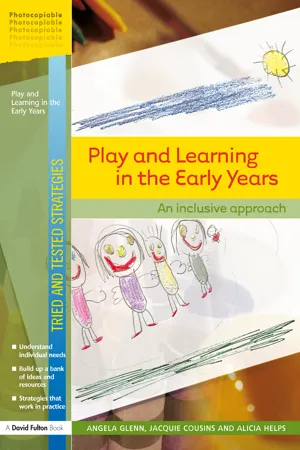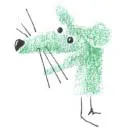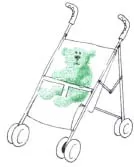
This is a test
- 88 pages
- English
- ePUB (mobile friendly)
- Available on iOS & Android
eBook - ePub
Book details
Book preview
Table of contents
Citations
About This Book
Play is crucial to every child's development. Use these practical strategies to ensure all children benefit from learning through play.
Includes:
- Short case studies that illustrate how strategies work in practice
- Practical, topical information on how to include all children in day-to-day activities
- Explanation of how different types of SEN can affect a child's play
- Advice on how to address different behaviours seen during play
- Photocopiable resources
Written for practitioners in all pre-school settings, as well as students, parents and childminders.
Frequently asked questions
At the moment all of our mobile-responsive ePub books are available to download via the app. Most of our PDFs are also available to download and we're working on making the final remaining ones downloadable now. Learn more here.
Both plans give you full access to the library and all of Perlego’s features. The only differences are the price and subscription period: With the annual plan you’ll save around 30% compared to 12 months on the monthly plan.
We are an online textbook subscription service, where you can get access to an entire online library for less than the price of a single book per month. With over 1 million books across 1000+ topics, we’ve got you covered! Learn more here.
Look out for the read-aloud symbol on your next book to see if you can listen to it. The read-aloud tool reads text aloud for you, highlighting the text as it is being read. You can pause it, speed it up and slow it down. Learn more here.
Yes, you can access Play and Learning in the Early Years by Angela Glenn in PDF and/or ePUB format, as well as other popular books in Education & Education General. We have over one million books available in our catalogue for you to explore.
Information

The importance of play
Theories of play
Involving parents
Using play to help children with emotional difficulties
Learning through play
Theories of play
Imagine a typical scene of a group of children in the kitchen. The first is 18 months old and has a saucepan. He has managed to find a wooden spoon and is ‘making cakes’. Another child is sitting on the floor with her dolls reading them a story. The third is sitting at a table, has found two spoons and is banging them together saying, ‘I’m a pop star.’
Throughout the ages healthy children have found opportunities to play but this activity has not always been recognised for its value. The following are a few of the major theories that have been put forward over the years to attempt to explain children’s play.
Evolutionary theory
In the nineteenth century, the evolutionary theory gave a tremendous insight into child development and an impetus to the study of this area. An interest in the development of infants from other species led to an interest in the newborn baby and how children learn to become adults. Play was carefully observed and became regarded as essential practice at becoming an adult through role play. This can be seen as children copy a range of activities and behaviours demonstrated by adults in games such as ‘playing mummies and daddies’ in the home corner and ‘playing teachers’.
Practice of skills for survival
This theory puts emphasis on the practice of skills for survival. It emphasises play as practising and perfecting the skills needed for later life. As with the previous theory, this idea arose from animal studies where young animals were observed constantly play-fighting in preparation for their self-preservation in later life.
In human child development this can be seen in such areas as children learning to share or to take turns and in their attempting to resolve disputes. These are all skills that will be necessary for these individuals to fully take part in the social organisations of life, such as school, work and family.
Play as an attitude
Play is usually connected with laughter and fun and is regarded as a pleasurable activity. Children can become totally absorbed in an activity which really interests them. This theory was that play is a state of mind and stems from absorption in that pleasurable activity.
We can see this when we observe children who appear to be totally involved in their role play. Any pre-school observation will include children who are in the dressing-up corner and have ‘become’ a fireman or a shopkeeper. Similarly, many children become completely involved with cause-and-effect toys, especially musical toys, and will play with these toys time and time again.
Play and the growth of intelligence
A further theory was put forward by Piaget, who carefully observed children’s early development. Originally a zoologist, Piaget’s ideas have been highly influential in the field of child development. Piaget hypothesised that play was closely bound up with the growth of intelligence. He spoke of two processes that he believed were fundamental to all development: ‘assimilation’ and ‘accommodation’, which basically mean taking things in and making sense and use of them.
Piaget spoke of the constant interplay needed between these two processes for effective learning. A child always tries to make sense of the information they receive and tries to relate it to something they already know.
When these two processes are not in balance, Piaget commented that this results in imitation. This can occur because the child is confused and the child is trying to understand the situation in the best way he or she knows how. Children who play at the same game or the same role play time and time again based on something they have seen could be imitating.
Assimilation is the child’s way of making sense of the information. It results in play where the child is playing with the information they have in order to make sense of it.
Play as a means of working through emotions
The famous psychoanalyst, Freud, drew attention to the fact that children learn to work through their emotions through play. Children can safely work through a range of emotions through role play or by acting out a story. Puppets can be very useful in situations where a child finds it easier to express his or her feelings through a different character.

Today’s practitioners understand that play serves a range of functions at different stages of a child’s social, emotional, behavioural and intellectual development and makes a vital contribution to preparing them for adulthood.
Involving parents
Early years practitioners have an important role to play in sharing their knowledge about the importance of play with parents and carers and offering suggestions about how learning can be supported at home. Parents want to give their children the best start in life and can be vulnerable to advertising on television and in magazines for so-called ‘educational’ toys. These can be expensive, and are often no more than gimmicks. More often than not, more valuable learning experiences can be provided at little or no cost in the home. It always amazes parents when their child receives a present and shows more interest in the cardboard box container than in its contents. The box represents a stimulus to the child’s imagination: it can become a car, a spaceship, a boat, a house.
Keeping parents informed about what is going on in the setting and particular topics being covered can give them ideas for activities. A regular information sheet can help – though take care not to bombard families with too much paper! (See pp. 5–6 for a sample newsletter.)
There are several ways that parents can be encouraged to share in their child’s play activities. For example:
• Parent and toddler groups invite parents to share in play activities with their children. These can be art and craft activities, play with construction toys, sharing books or simply talking with children about what is happening. For example, making bread or playing with playdough can encourage a richness of language and also develop creative and imaginary thinking.
• Some pre-schools use parents as voluntary helpers for specific sessions. These sessions are usually as much fun for the parents as for the children. They can provide a valuable opportunity for parents to see how fun equipment can be used in small areas. For example, a small tray of sand and a bowl of water with a plastic mat underneath could be used in the home or in the garden. Household items such as spoons, plastic cups and other household utensils can provide a rich practical experience for children where parents can add the language to support the child’s development of mathematical and scientific concepts such as ‘heavier’, ‘sinking’ or ‘how many?’.
• It is important that parents who find it difficult to play with their children are shown good role models. Pre-school staff will need to praise the child for the activities they are carrying out and demonstrate how effective praise can be in encouraging children to develop play and concentrate on activities. For some parents it may become a different way of viewing their child when they see the child’s responses.
• Increasingly, toy libraries are being set up in children’s centres. If a child in pre-school or at a childminder’s shows an interest in a particular toy it may be possible to borrow that toy or a similar toy from a toy library.
• There are a number of different schemes that have been set up to encourage parents and children to play together. In some cases a professional comes into the family home and plays with the child (either with the child’s own toys or with toys they take into the home) to model appropriate activities. Other schemes encourage parents to meet in family-friendly places where a range of fun activities have been set up. (Details of these schemes can be found through local children’s information services.) These are valuable in demonstrating a variety of games to parents and extending their ‘repertoire’ of things to do with their children. (See pp. 5–6 for some suggestions of games to play with children.)

• In many pre-schools the outdoor play is becoming increasingly important b...
Table of contents
- Cover
- Halftitle
- Title
- Copyright
- Contents
- Acknowledgements
- Introduction
- Section 1: The importance of play
- Section 2: Case studies
- Section 3: Play skills
- Section 4: Top tips for creating a challenging play environment
- Appendix 1: Recording pack
- Appendix 2: Friends and family circle – blank
- Appendix 3: Teddy bear climbing frame activity – blank
- References
- Further reading
- Useful addresses